Ancient City Of Adab That Flourished In North Sumer
A. Sutherland - Ancient Pages.com - Ancient Adab (now Bismaya, Iraq) was an important early ancient Sumerian city, probably the main seat of the goddess Ninhursag, the fourth of the creating deities (others are Anu, Enki, and Enlil).
Adab once lay on the ancient route of the Euphrates River, approximately 25 miles southeast of Nippur. When the river changed its course, the city began to vanish and lost its greatness.
In a list of cities, found on a tablet from Nineveh, appears the name UD-NUN-KI, which is accompanied with a note that it means: ‘Adab’. Therefore the ancient people called this city Adab (modern Tell Bismaya).
City of Adab in ancient sources
Adab was excavated by the American archaeologist and Assyriologist, Edgar James Banks, in the years (1903–04). The excavations revealed prehistoric buildings and also others dated to the reign of Ur-Nammu (reigned 2112–2095 BC). Adab was an important Sumerian center only up to about 2000 BC.
See also:
Lugal-Anne-Mundu: ‘King Of The Universe’ And Powerful Leader Who Restored Sumer To Its Former Glory
King Ur-Nammu – King Of Ur, King Of Sumer And Akkad – The One Who Built The Temple Of God Enlil
There are mainly two literary sources that mention Adab; the first is the Sumerian King List, which ascribed to Adab, one early dynasty comprising of only one king, Lugal-anne-mundu, who was said to have ruled for 90 years. His reign is dated back to about 2400 BC. After Lugal-Anne-Mundu’s reign, his empire collapsed.
Another brief mention of the city of Adab can be found the introduction to the Hammurabi Code. King Hammurabi says that he built or restored the city UD-NUN-KI (Adab) and its temple E-Mach.
Interestingly, at almost all other times in its history, Adab was ruled by kings who had much power and controlled all or most of Babylonia (southern Mesopotamia).
Excavations of Adab
Altogether, the city of Adab appears sixteen times in the archaic tablets from Uruk, pointing to the existence of an early settlement at the end of 4000 BC, located in the same place where archaeological excavations revealed traces of urban life in later periods.
However, archaeologists did not find any materials (plates, bricks, vessels, structures), which would precede a period of the first centuries of 3000 BC.
Remains of temples and palaces were found there, with objects bearing votive inscriptions. Some of them identified a king of Adab, named Lugal-Dalu, who reigned about 2400 BC. Banks and his team also unearthed a massive ziggurat, several temples, private houses, a cemetery, a palace, and at least one large archive of cuneiform tablets.
Double walls surrounded the city of Adab, which consisted of two parts, divided by a canal. The excavated ruins – those found close to the surface of the mounds - belonged to Ur-Nammu and his son Shulgi, the second king in the Third Dynasty of Ur. Shulgi reigned for 48 years (c. 2029 – 1982 BC) and completed the construction of the Great Ziggurat of Ur, which was begun by his father Ur-Nammu.
In more ruins just below these, there were found artifacts dated back to the reign of Naram-Sin ("Beloved of Sin") who reigned c. 2254–2218 BC and Sargon of Akkad, about 2300 BC.
Despite these valuable findings, not much archaeological information was recovered about Adab; at that time, no modern excavation techniques and modern analysis were available.
Among other fascinating discoveries made at Adab city was:
“the bitumen-paved floor sloped gently to a vertical drain in the east corner. The drain was of the usual type, and a rectangular opening, thirty by eight centimeters, opened into it..”
“We found the drain empty to the depth of three meters, but probably it reached four times that distance into the ground. Along the south-eastern wall there were traces of an upper chamber, and just above the corner by the drain was a small compartment with walls of bitumen, as if it were a reservoir for water. The bricks beneath it showed that they had been subjected to great heat.
“Was this a furnace for heating the water? And was the water in the reservoir high above the bath that it might fall in a shower upon the bather below? Was there a hot-water shower-bath for the use of the public at Adab nearly five thousand years ago? (Dr Banks reported in” Bismya, or the lost city of Adab”)
Based on city seal impressions from the city of Ur the ancient Adab was most probably part of a league or alliance of Sumerian cities.
Written by – A. Sutherland AncientPages.com Staff Writer
Copyright © AncientPages.com All rights reserved. This material may not be published, broadcast, rewritten or redistributed in whole or part without the express written permission of AncientPages.com
Expand for referencesReferences:
Ward W. H. The seal cylinders of western Asia
Sitchin, Zecharia. There Were Giants Upon the Earth
More From Ancient Pages
-
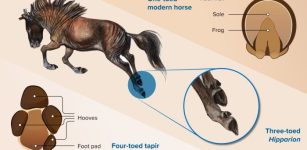 Modern Horses Have Lost Their Additional Toes, Scientists Confirm
Evolution | Jun 21, 2023
Modern Horses Have Lost Their Additional Toes, Scientists Confirm
Evolution | Jun 21, 2023 -
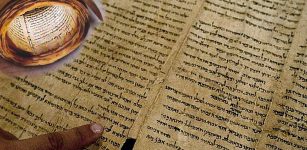 Deciphered Dead Sea Scroll Reveals Secret Calendar And Two Events Not Mentioned In The Bible
Archaeology | Jan 23, 2018
Deciphered Dead Sea Scroll Reveals Secret Calendar And Two Events Not Mentioned In The Bible
Archaeology | Jan 23, 2018 -
 Early Humans Reached Northwest Europe 45,000 Years Ago – New Research Shows
Human Beginnings | Jan 31, 2024
Early Humans Reached Northwest Europe 45,000 Years Ago – New Research Shows
Human Beginnings | Jan 31, 2024 -
 Controversial Story And Secret Knowledge Of Li Ching-Yuen Who Lived For 256 Years
Featured Stories | Sep 19, 2015
Controversial Story And Secret Knowledge Of Li Ching-Yuen Who Lived For 256 Years
Featured Stories | Sep 19, 2015 -
 The Hobbit – An Ancient Hominin Species May Still Be Living In The Forests Of Flores Island – Anthropologist Says
Archaeology | Apr 20, 2022
The Hobbit – An Ancient Hominin Species May Still Be Living In The Forests Of Flores Island – Anthropologist Says
Archaeology | Apr 20, 2022 -
 Andalusia Was First Inhabited By Neolithic People From The Southern Part Of The Iberian Peninsula 6,200 Years Ago
Archaeology | Feb 26, 2024
Andalusia Was First Inhabited By Neolithic People From The Southern Part Of The Iberian Peninsula 6,200 Years Ago
Archaeology | Feb 26, 2024 -
 Mysterious Ancient Danube Stone Faces And The Fish Goddess Connection
Artifacts | Dec 18, 2019
Mysterious Ancient Danube Stone Faces And The Fish Goddess Connection
Artifacts | Dec 18, 2019 -
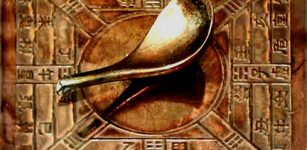 Magnetic Compass Was Invented In Ancient China
Ancient History Facts | Mar 18, 2016
Magnetic Compass Was Invented In Ancient China
Ancient History Facts | Mar 18, 2016 -
 Levänluhta People Could Survive Fimbulwinter Thanks To Their Diverse Livelihoods
Archaeology | Apr 24, 2020
Levänluhta People Could Survive Fimbulwinter Thanks To Their Diverse Livelihoods
Archaeology | Apr 24, 2020 -
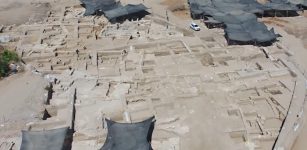 World’s Largest Wine Factory From The Byzantine Period Unearthed In Yavne
Archaeology | Oct 14, 2021
World’s Largest Wine Factory From The Byzantine Period Unearthed In Yavne
Archaeology | Oct 14, 2021 -
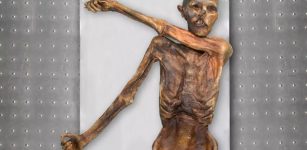 Ötzi Had Dark Skin, Bald Head And Anatolian Ancestry- DNA Reveals
Evolution | Aug 16, 2023
Ötzi Had Dark Skin, Bald Head And Anatolian Ancestry- DNA Reveals
Evolution | Aug 16, 2023 -
 Evolution Mystery – Mini-Proteins In Human Organs Appeared ‘From Nowhere’
Human Beginnings | Feb 20, 2023
Evolution Mystery – Mini-Proteins In Human Organs Appeared ‘From Nowhere’
Human Beginnings | Feb 20, 2023 -
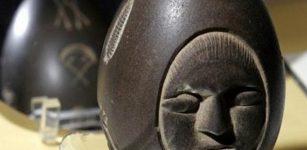 America’s Ancient “Mystery Stone” Remains An Unexplained Puzzle
Artifacts | Apr 17, 2014
America’s Ancient “Mystery Stone” Remains An Unexplained Puzzle
Artifacts | Apr 17, 2014 -
 Did Human Middle Ear Evolve From Fish Gills? – Chinese Fossils Reveal
Archaeology | Jun 17, 2022
Did Human Middle Ear Evolve From Fish Gills? – Chinese Fossils Reveal
Archaeology | Jun 17, 2022 -
 Why Did Vikings Burn And Bury Their Longhouses?
Ancient Traditions And Customs | May 3, 2017
Why Did Vikings Burn And Bury Their Longhouses?
Ancient Traditions And Customs | May 3, 2017 -
 Millennia Old Extremely Complex Object Of Unknown Origin
Ancient Technology | Jul 8, 2020
Millennia Old Extremely Complex Object Of Unknown Origin
Ancient Technology | Jul 8, 2020 -
 Neanderthals Changed Ecosystems 125,000 Years Ago
Archaeology | Dec 16, 2021
Neanderthals Changed Ecosystems 125,000 Years Ago
Archaeology | Dec 16, 2021 -
 Ancient History Of The Samurai Armor
Featured Stories | Aug 27, 2018
Ancient History Of The Samurai Armor
Featured Stories | Aug 27, 2018 -
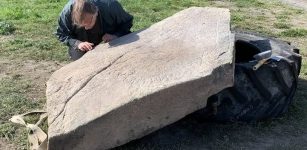 Unique Viking Age Runestone With A Cross And Animal Biting Its Own Tail Discovered By Farmer In Sweden
Archaeology | Sep 20, 2020
Unique Viking Age Runestone With A Cross And Animal Biting Its Own Tail Discovered By Farmer In Sweden
Archaeology | Sep 20, 2020 -
 Wendigo: Cannibalistic Shapeshifter In Mythology Of Indians Of North America And Canada
Featured Stories | Sep 3, 2016
Wendigo: Cannibalistic Shapeshifter In Mythology Of Indians Of North America And Canada
Featured Stories | Sep 3, 2016



